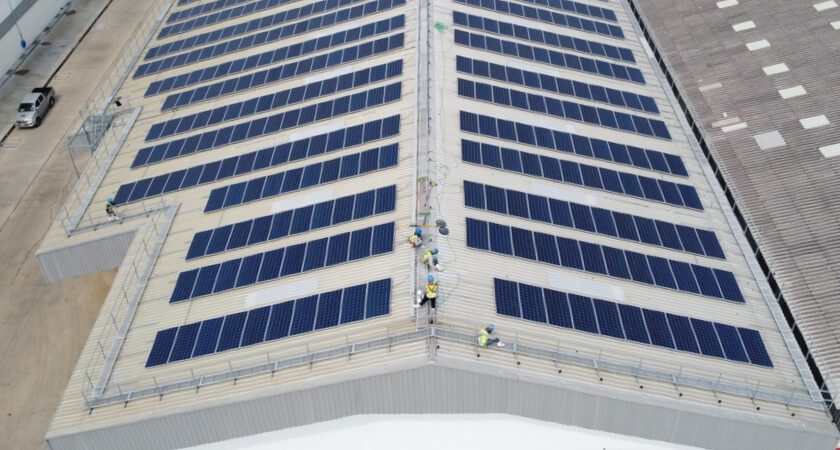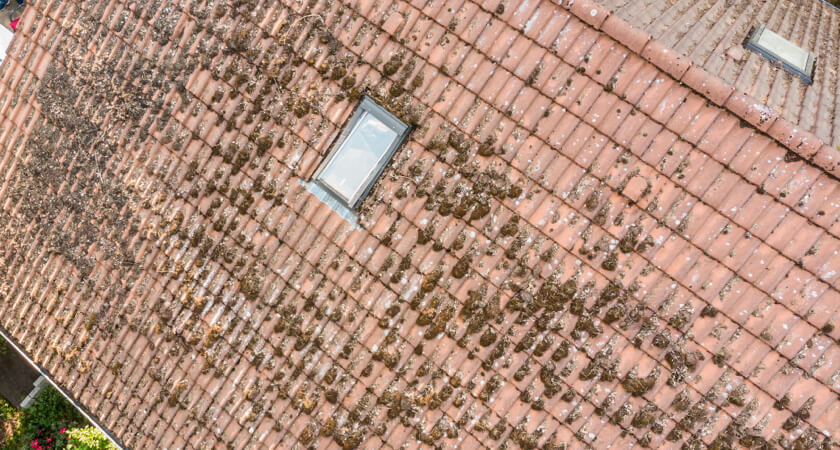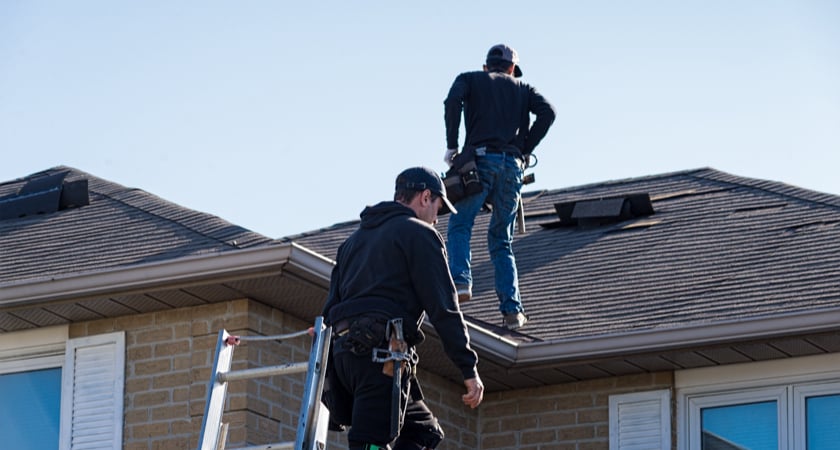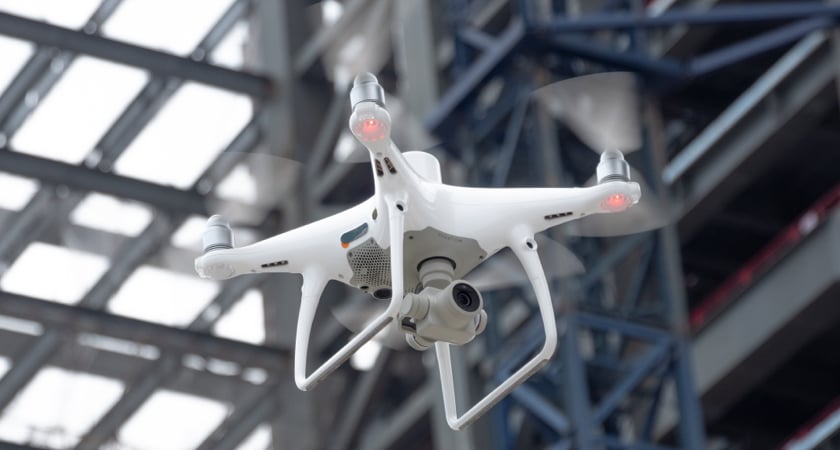The roof of your building can be easy to ignore — until suddenly it’s not. Small damage from weathering and aging, as well as less subtle threats like storms, can slowly eat away at the performance and stability of your roof, until one day you wake up in need of emergency repairs, and end up stuck with a far larger bill than you ever expected.
The solution? Regular, thorough roof inspections conducted by a professional using a drone. From reducing man-hours to ensuring more comprehensive analysis, drones have revolutionized the way property owners and contractors alike think about roof assessment.
When and why you need a roof inspection
Whether you own a residential or commercial property, it’s important to know what kind of wear and tear your roof has sustained and look for signs of adverse issues that could arise down the road.
Some reasons you may need a roof inspection include:
- Warranty protection: Many warranty agreements require property owners to perform a roof inspection on a set basis for the warranty to remain in effect.
- Check for weathering: Weather damage is a tricky thing. On a day-to-day basis, you may not notice many changes. However, the quality of your roof will slowly deteriorate if it isn't properly maintained. An inspection can help you to spot problem areas early and do course-corrective repairs before you need to foot a larger bill.
- Leak assessment: There’s nothing worse than a leaking roof. Simple as that.
- Drainage issues: Few roof-related problems can be as devastating as clogged drains. If left unchecked for extended periods, these can cause buildups of water that eventually begin to leak through the ceiling and cause damage property-wide. A roof inspection can spot pile-ups of leaves and debris in your gutters and help prevent an issue down the road.
- Maintenance damage: While you would always assume that the contractors you hire for other jobs, such as replacing tiles or clearing drains, wouldn’t create new problems, this expectation doesn’t always match reality. If damage goes unreported — whether intentionally or simply because the contractor was unaware of an issue — it can cause major problems in the future.
- Solar panel installation: Adding solar panels to your property can provide you an in-house energy source that not only helps reduce greenhouse gas emissions but can also provide major savings in the long term. There are, however, several requirements your building will have to meet to be eligible for solar panel installation — such as local and state ordinances. Your roof is a big part of the equation, as it will need to be sturdy, clean, sloped in the correct direction and large enough to carry enough solar panels to make the investment worth your while. A roof inspection can help clarify each of these points so you can make an informed decision.
- Preemptive checks: Just because you don’t have reason to believe your property has taken on new damage doesn’t mean it isn’t a good idea to check. Regular inspections, even beyond those required by your warranty, can help you spot weathering patterns and make appropriate fixes before a problem even emerges.

The advantages of a drone roof inspection
So you understand the importance of a roof inspection, but why a drone roof inspection?
There are many advantages to performing a roof inspection with a drone — including reduced time, manpower, risk, and, ultimately, a strong ROI for contractors and property owners alike. Some of the top reasons contractors and property owners around the world are switching to drone roof inspections include:
Accuracy
No matter how much of a professional you are, human error is inevitable — it happens to the best of us! Using proper surveying techniques, a drone can create accurately scaled images and keep results consistent across an entire project. This is especially true if you’re working with a drone that can automate flight paths (more on that later), as this takes yet another potential area of human error out of the equation.

Time
Quite simply, with the aid of a drone, roof inspections (and site inspections overall) just don’t take as long. In the past, roof inspectors needed to make measurements from the ground and then find a way to climb up to the roof to finish the job. Now, with the aid of a UAV, inspectors stay in one place, run as few as a single flight route, and let stitching software do the rest. The result? 2D or 3D models in record time.
For contractors, an enterprise drone opens up the ability to work on more projects in a day than ever before. For property owners, it removes a lot of the hassle of regular roof inspections.
Safety
The point of a roof inspection is to increase the safety of your building. The last thing you want is for someone on your team to get hurt during the inspection process. With UAV aerial photography, you can take images from vantage points that humans can’t safely reach. Taking images of the top of a chimney, for example, is far safer from the confines of the ground than standing on a ladder or on top of a building. Using a drone for some or all of your roof inspections can help to reduce the level of risk associated with your project.
Cost
While frugal business owners may be concerned about the initial price of a drone, the case for a strong ROI is still clear-cut. By utilizing drone technology a contractor can cut down on labor costs (and potential insurance payouts for injured workers) as well as take on more inspection jobs than is possible without drone assistance.

Regulations regarding commercial drone use
While a drone roof inspection can be relatively simple and advantageous, it’s worth noting that there are certain regulations you must follow — especially if you are a roofing contractor using an enterprise drone for commercial purposes.
In the U.S., a commercial drone pilot must have obtained a Remote Pilot Certificate and register their UAV with the Federal Aviation Administration (FAA). This requires pilots to pass what’s called the Part 107 test, which covers subjects like regulations, operating requirements, the effects of weather on a UAV, radio communication and emergency procedures, and maintenance and preflight inspection procedures. Here is some information on how to become a commercial drone pilot.
There are also rules about what airspace a commercial drone can fly in and what kind of equipment it may carry. Notably, drones must remain below 500 feet and within the pilot’s line of sight (not typically an issue for a roof inspection). In addition, drones must weigh less than 55 pounds, including any payloads. Once again, considering you’ll want a relatively light and dextrous UAV for a roof inspection, this probably won’t be an issue.
Features to consider in a UAV
There are multiple factors to consider when searching for the right drone for your next roof inspection. The right choice will probably depend on the specifics of the jobs you’ll be doing and whether they’re roofing-specific or will include other surveying work.
For peak roof inspection performance, you’ll want a drone that’s on the lighter side. Unlike larger surveying jobs, which may involve taking aerial photographs of many miles of the property, a roof survey will require a drone to pivot quickly and take pictures of relatively small objects, like chimneys. As such, you need a drone that’s fairly nimble.
However heavy your drone may be — and whether you’re a roof inspector or a property owner — you’ll probably also want to ensure you’re using a drone designed with enterprise work in mind. Enterprise drones tend to be more durable and reliable than their hobby-use counterparts and are typically compatible with specialized industry-specific payloads and software. Top drone providers, like DJI, are also likely to offer their enterprise customers a higher level of after-sale support and maintenance, as enterprise drones are more likely to be used regularly and put in positions where they can incur a higher level of wear and tear.
One of the features that’s key for a roof inspection drone is the ability to set an autonomous flight path. Roof inspection jobs, especially those focused on a specific issue or feature, might be hard to fully capture manually. An autonomous flight path will allow you to plot out a course for your drone ahead of time and make adjustments as you need.

The right enterprise drones and payloads for a roof inspection from DJI
DJI offers multiple commercial drones that meet the specifications and challenges of roof inspection. UAVs like the DJI Phantom 4 RTK are designed with low-altitude mapping and inspection in mind. This drone offers a centimeter-level positioning system, automated flight paths, and convenient connection with the GS RTK App. Used with the right camera payload and you have a reliable combination, job after job.
Of course, the right drone will only get you so far on its own. Mapping software is essential to an inspection job. With the DJI Terra platform, you can create 2D and 3D models with pinpoint accuracy for any mapping job, be it mission planning, area mapping, or anything in between.
Sources:
https://blog.dronebase.com/how-to-do-a-roof-inspection-with-a-drone
https://www.worthyinspections.com/blog/why-roof-inspections-are-important
https://enterprise.dronenerds.com/everything-you-need-to-know-about-roof-inspection-drones/
https://stellarsolar.net/2018/11/14/solar-power-installation-requirements-what-you-need-to-know/



.png?width=300&name=FH2%20update%20(1).png)
-1.png?width=300&name=HS%20-%20Featured%20Images%20(3)-1.png)
